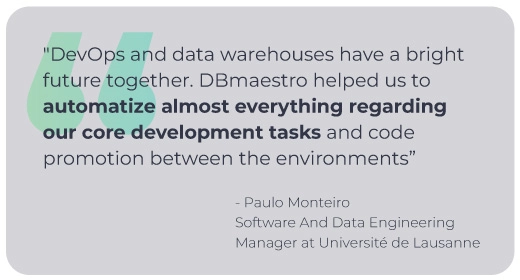Organizations looking to streamline their software development and IT operations are increasingly turning to DevOps. This comprehensive guide will walk you through the step-by-step process of implementing DevOps in your organization, highlighting strategies that can lead to success and growth. By fostering collaboration, optimizing processes, and leveraging automation, DevOps can transform your business operations and drive significant improvements.
What You Will Learn
In this blog post, you will discover:
- The fundamentals of DevOps and its significance in modern software development.
- Key components of a successful DevOps implementation plan.
- How to assess your current DevOps maturity.
- A detailed step-by-step guide for implementing DevOps in your organization.
- Strategies for overcoming common challenges in DevOps implementation.
- An overview of essential DevOps automation tools.
Understanding the Basics of DevOps
DevOps, a term coined by Patrick Debois in 2009, represents a cultural and professional movement that emphasizes collaboration and communication between software developers and IT professionals. It integrates development (Dev) and operations (Ops) to enhance the speed and quality of software delivery. By adopting DevOps, organizations can achieve faster release cycles, improved product quality, and greater operational efficiency.
The significance of DevOps in modern software development cannot be overstated. As businesses strive to respond quickly to market demands and customer feedback, traditional development methodologies often fall short. DevOps addresses these challenges by promoting a culture of continuous improvement and collaboration, enabling teams to work together more effectively.
The Key Components of a DevOps Implementation Plan
A successful DevOps implementation plan involves several key components:
- Continuous Integration (CI): Regularly integrating code changes into a shared repository to detect and address issues early. CI helps to automate the testing process, ensuring that new code does not break existing functionality.
- Continuous Delivery (CD): Automating the release process to ensure that software can be deployed to production at any time. CD allows teams to release new features and updates more frequently, enhancing responsiveness to customer needs.
- Infrastructure as Code (IaC): Managing and provisioning infrastructure through code, enabling consistency and scalability. IaC allows teams to automate the setup and configuration of environments, reducing the risk of human error.
- Monitoring and Feedback Loops: Continuously monitoring applications and infrastructure to gather feedback and improve performance. This component ensures that teams can quickly identify and resolve issues, leading to a more reliable and stable system.
Assessing Your Current DevOps Maturity
Before diving into DevOps implementation, it’s crucial to assess your organization’s current maturity level. This assessment will help you identify strengths and weaknesses in your existing processes and tools.
Evaluating Existing Processes and Tools
Conduct an audit to evaluate your current development and operations processes. This involves reviewing your existing tools, workflows, and team structures. Consider the following questions:
- What tools are currently in use for version control, testing, and deployment?
- How often do teams release new features or updates?
- What challenges do teams face in collaboration and communication?
By answering these questions, you can gain insights into your current state and identify areas for improvement.
Identifying Areas for Improvement
Look for bottlenecks or inefficiencies in your current workflow. Use a diagram to visualize the assessment process, highlighting areas where DevOps can bring the most value. Common areas for improvement include:
- Manual Processes: Identify any manual tasks that could be automated, such as testing or deployment. Automation can significantly reduce the time and effort required for these tasks.
- Communication Gaps: Analyze how information flows between teams. Are there silos that hinder collaboration? Implementing tools that facilitate communication can help bridge these gaps.
- Feedback Mechanisms: Evaluate how feedback is gathered and acted upon. Establishing effective feedback loops ensures that teams can continuously learn and improve.
Step-by-Step Guide to DevOps Implementation
Once you have assessed your current state, you can begin the process of implementing DevOps in your organization. Here’s a step-by-step guide to help you navigate this journey.
Setting Clear Objectives
Define clear goals and outcomes for your DevOps implementation. Whether it’s reducing time-to-market, improving software quality, or enhancing customer satisfaction, having well-defined objectives will guide your efforts and measure success. Consider using the SMART criteria (Specific, Measurable, Achievable, Relevant, Time-bound) to formulate your objectives.
Building the Right Team
Assemble a DevOps team with clearly defined roles and responsibilities. This team should include developers, operations staff, quality assurance professionals, and possibly security experts. Each member should understand their role in the DevOps process and how they contribute to the overall goals. Encourage cross-functional collaboration to ensure that all perspectives are considered.
Selecting the Right Tools and Technologies
Choosing the right tools and technologies is crucial for the success of your DevOps implementation. Consider tools that support CI/CD, automation, and monitoring. Some popular options include:
- CI/CD Tools: Jenkins, GitLab CI, CircleCI
- Containerization: Docker, Podman
- Orchestration: Kubernetes, OpenShift
- Monitoring: Prometheus, Grafana, ELK Stack
Evaluate these tools based on your specific needs, team expertise, and integration capabilities with existing systems.
Establishing a Culture of Collaboration
DevOps is as much about culture as it is about technology. Encourage collaboration across teams by breaking down silos and fostering open communication. This cultural shift is critical to the success of your DevOps implementation. Consider the following strategies:
- Regular Meetings: Hold regular stand-up meetings to discuss progress, challenges, and goals. This keeps everyone aligned and encourages collaboration.
- Cross-Training: Provide opportunities for team members to learn from one another. This can help build empathy between teams and improve overall collaboration.
- Celebrate Successes: Recognize and celebrate achievements, both big and small. This fosters a positive environment and motivates teams to continue improving.
Overcoming Common Challenges in DevOps Implementation
Implementing DevOps is not without its challenges. Here are some common obstacles organizations face and strategies to overcome them.
Handling Resistance to Change
Resistance to change is a common challenge in DevOps adoption. Address this by communicating the benefits of DevOps and involving stakeholders in the implementation process. Provide training and support to ease the transition. Highlight success stories from other organizations to demonstrate the value of DevOps.
Ensuring Security and Compliance
Integrate security into your DevOps processes through DevSecOps practices. This involves automating security checks within the CI/CD pipeline to ensure compliance without compromising speed. Encourage a security-first mindset among all team members, emphasizing that security is everyone’s responsibility.
Managing Legacy Systems and Technical Debt
Incorporate legacy systems into your DevOps framework by gradually modernizing them. Address technical debt by prioritizing refactoring and updating outdated components. Consider implementing a phased approach to modernization, allowing teams to focus on high-impact areas first.
Key Takeaways
- DevOps bridges the gap between development and operations, enhancing collaboration and efficiency.
- Continuous Integration and Delivery are fundamental to a successful DevOps implementation.
- Assessing your current maturity level is crucial for identifying improvement areas.
- A culture of collaboration is as important as the tools and technologies used.
- Security should be integrated into every stage of the DevOps process.
DevOps Automation Tools Overview
DevOps relies heavily on automation to streamline processes and improve efficiency. Essential tools include Jenkins for CI/CD, Docker for containerization, and Kubernetes for orchestration. These tools enable teams to automate repetitive tasks, reduce errors, and accelerate delivery.
For instance, Jenkins allows teams to automate the building, testing, and deployment of applications, while Docker provides a consistent environment for running applications across different stages of the development lifecycle. Kubernetes, on the other hand, simplifies the orchestration of containerized applications, making it easier to manage and scale deployments.
Conclusion
Implementing DevOps is a transformative journey that requires careful planning, collaboration, and the right tools. By following this step-by-step guide, your organization can harness the power of DevOps to achieve greater efficiency, innovation, and growth. Embrace the cultural shift that comes with DevOps, and prioritize collaboration and communication across teams. For more insights and a personalized consultation, schedule a demo with our experts today.
By adopting these strategies, you can position your organization for success in the evolving landscape of software development and IT operations. Embrace the DevOps mindset, and watch your organization thrive.








